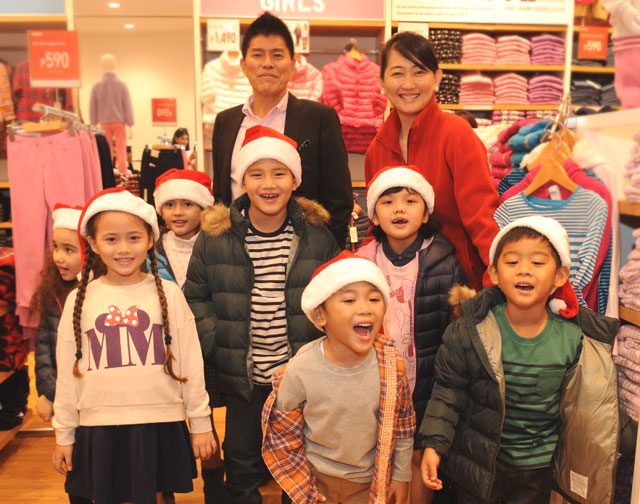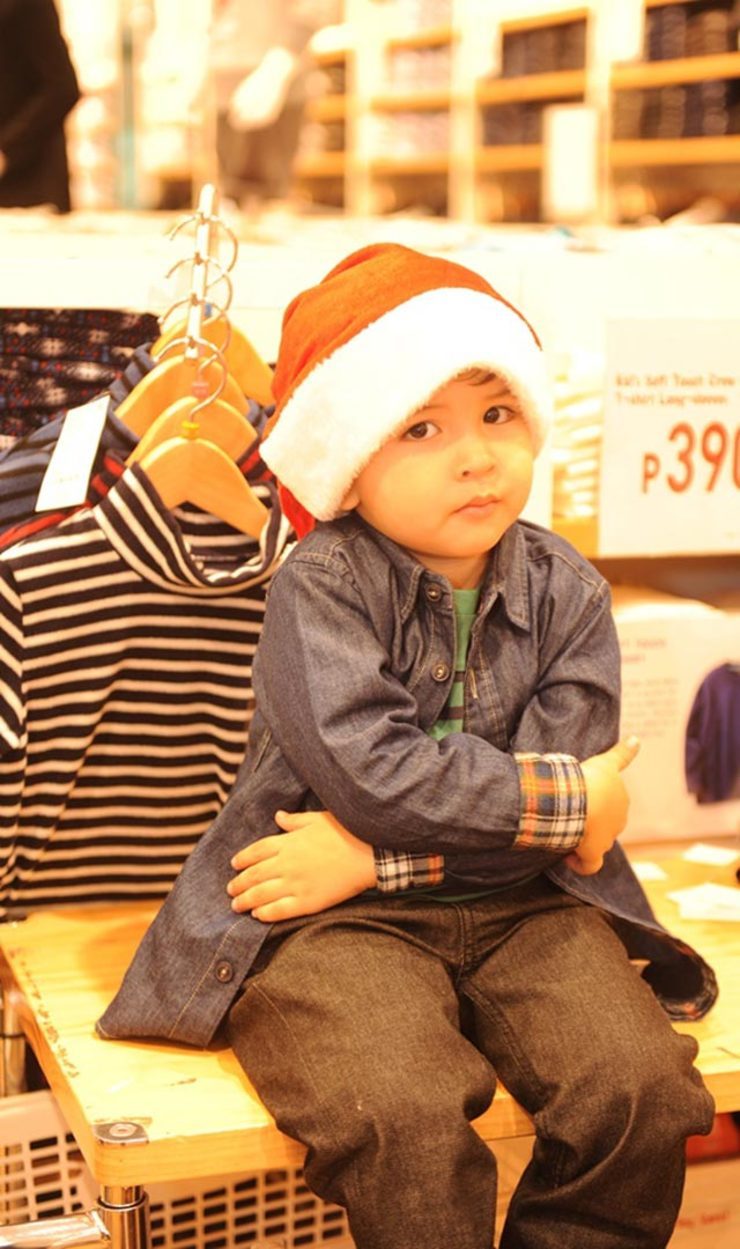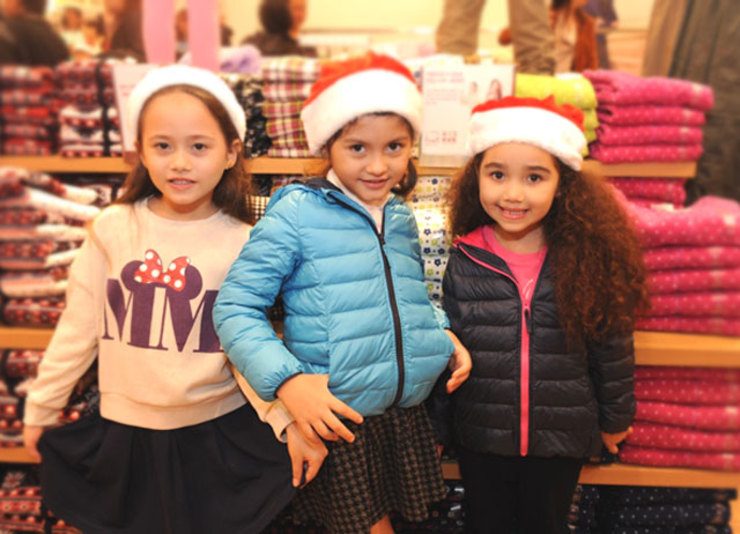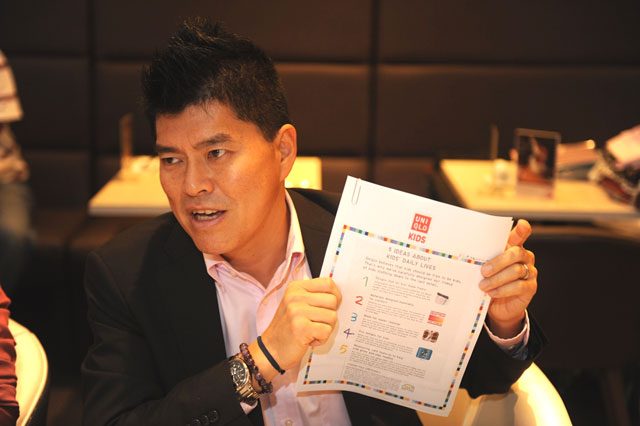SUMMARY
This is AI generated summarization, which may have errors. For context, always refer to the full article.

MANILA, Philippines – Uniqlo (short for “Unique Clothing”), the Japanese casual clothing retailer of holding firm Fast Retailing Co. Ltd., launched its expanded babies and kids line last Wednesday, October 15, in time for its fall/winter 2014 collection.
Boosting that optimism is Uniqlo’s offering of its babies/infant/newborn line, and boys’ and girls’ collection to the Philippine market, which has a lot more “potential than Taiwan, Singapore, and Japan – [because] we see many children here,” Fast Retailing Philippines, Inc. chief operating officer Katsumi Kubota said.
Let kids be kids
As babies’ and kids’ clothes are easily outgrown by their wearers – and “we can’t stop babies from growing,” Kubota quipped – Uniqlo is positioning this line for its comfort, design, and above all, safety, thus increasing its pass-on rate to the family’s succeeding children.
As a fashion line, the babies and kids clothes of Uniqlo are innovated to let them move freely with the use of elastic waist bands and stretchy materials, thus retaining the clothes’ form after several washing.
Uniqlo has also been known for its fabric technology, like its HEATTECH lightweight clothing that keeps the wearer warm during colder months. This technology, along with the use of fleece materials, is present in the brand’s babies and kids line. Kubota said the collection’s introduction in the Philippines is timely since the amihan or the colder northeast monsoon season had already started in the country.
Added to this technology-backed line is Uniqlo’s Warm Padded Outerwear series that include coats, jackets, parkas, and vests. The increased air space within the garment makes this a durable line, allowing for repeated washing, while retaining the clothes’ warmth feature.

For Uniqlo, they made their collection easier to wear, like adding zippers that are easier to pull, and wider, elastic waist bands on baby clothes. “We make these products easy for kids to move and for busy parents to put on or take off the clothes easily,” Kubota said.
The designs also are “fun,” like its Disney and Noomi themed clothes – designs that look good on Uniqlo’s very young customers, Kubota said. “We want kids to look like kids, not miniature adults,” he stressed. The biggest bulk of the collection is for the girls’ line, ranging from cardigans, dresses, and skirts of various colors and patterns.
Topmost for Uniqlo’s expanded line is safety. Kubota said that not many brands are concerned about safety in producing clothes for babies and kids, and at times customers are comparing items based only on price.
The Japanese executive cited that there are still clothes for this segment with metallic buttons sewn on them, or made of fabric with carcinogenic chemicals. “Babies like to chew their clothes so we made our clothes safer for babies to chew,” Kubota illustrated.
Uniqlo passed the strictest global OEKO-TEX Standard 100 class 1 criteria, a certification given to a product that met rigid tests for presence of harmful substances or sensitivity to a human’s skin.
Kubota said their baby clothes are made with the care label/tag on the outside (than usually found in the clothes’ inside) to avoid contact with the baby’s delicate skin. Uniqlo’s kids clothing also comes with safety features such as a tag to have your child’s name and address, night time safety reflectors, and zipper guards to avoid scratching the face.
Competing with Filipino fashion retail brands
The Uniqlo kids line was introduced in 1997, and in 2002 it launched its babies’ line. The Japanese fast fashion brand now wants to double its sales in this segment by expanding the line to 50% and having the collection available in 60%, or from 426 to 679, of their stores worldwide.
Currently at 7% market share, Kubota said Uniqlo wants to up further its growth for the babies and kids line. “We still want to grow above 10%,” he said. Uniqlo aims for a $50 billion-revenue by 2020, with $10 billion of these sales coming from North America. As of August 2014, the company reported net sales of JP¥1.38 trillion ($12.93 billion*).
To grow the babies and kids line in the Philippines, Uniqlo has to transform its sales floors to give way to the expanded collection.

Kubota said that their men’s line of smart to casual business clothing is not doing so well in the country, so they adjusted their floor sections in this segment to give more room for their expanded babies and kids line.
Uniqlo also put up a dedicated website for this. The Uniqlo babies and kids collection are priced from P290 ($6.46**) to P1490 ($33.18).
Asked about competition, Kubota said that they are not afraid of other foreign fashion retail brands here in the country, like Inditex (the Spanish company behind Massimo Dutti, Pull and Bear, and Zara) and H&M (which opened in the Philippines on Friday, October 17).
Filipino acceptance of the Uniqlo brand since it entered in 2012 is “80% good,” Kubota said, and their 17th store is opening on Friday, October 24, at the Power Plant Mall in Makati.
But they are on guard for competition from home-grown Filipino brands like Bench and Penshoppe, and for the babies and kids segment, the brand Gingersnaps.

Kubota said the key is to communicate clearly what Uniqlo not only sells, but also their business model and values – from their strengths, to research and development efforts, and social responsibility initiatives. For instance, Uniqlo, like H&M and Inditex, also signed a pact ensuring safety of textile workers, following the April 2013 collapse of the 9-storey Rana Plaza, which housed 5 separate garment factories.
Uniqlo’s parent company, Fast Retailing said in August 2013 that their clothes were not being manufactured in the factory that collapsed but the company had also completed an investigation into its sub-contractors’ factories in Bangladesh.
“We feel very strong competition from the local brands because Filipinos know their story. Uniqlo has to do more so that the customers understand us fairly. We want to be part of the Philippines’ growth,” Kubota said. – Rappler.com
*($1 = JP¥106.92)
*($1 = P44.91)
Add a comment
How does this make you feel?
There are no comments yet. Add your comment to start the conversation.